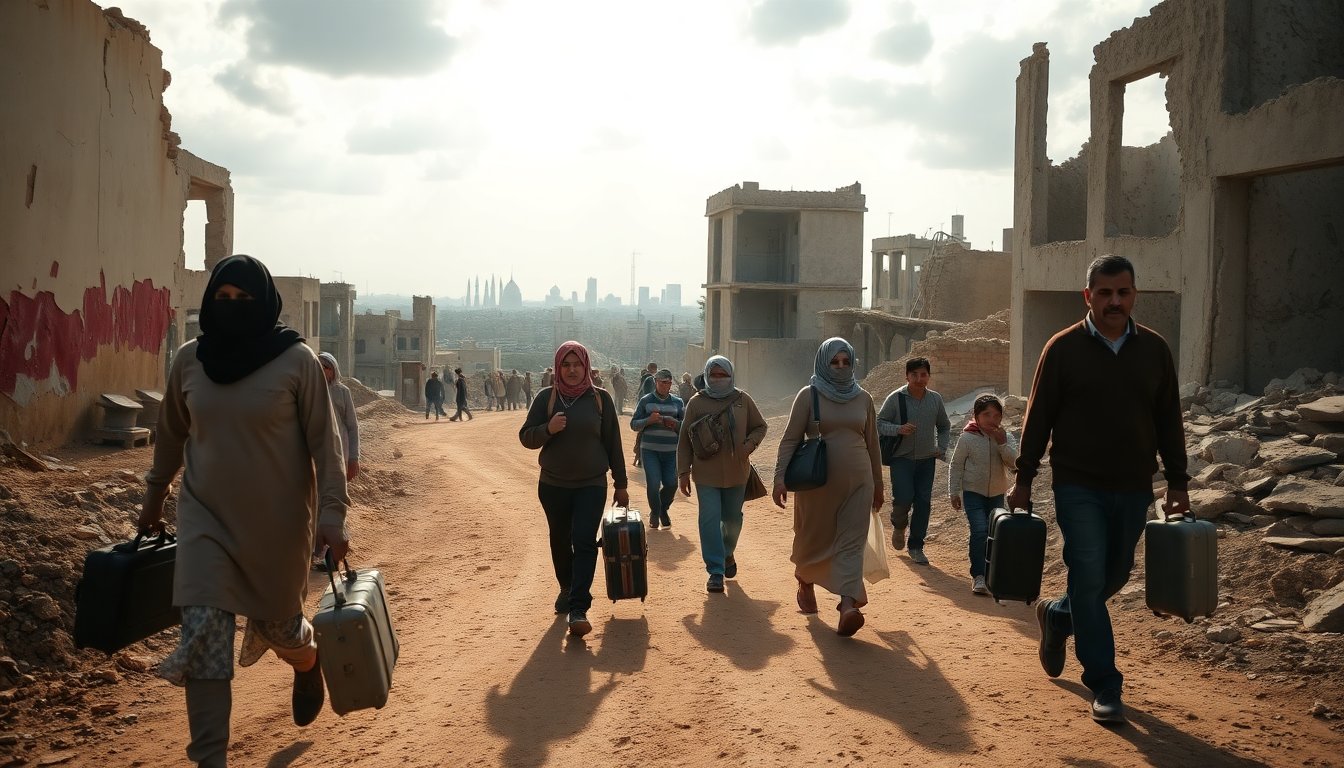Table of Contents
On Friday, a new chapter began for thousands of displaced Palestinians returning to their former homes after a ceasefire agreement between Israel and Hamas. This agreement allowed Israeli troops to withdraw from select regions of Gaza, marking a significant shift in the ongoing conflict that has devastated lives and left many homes in ruins.
As displaced Gazans journeyed northward, a large crowd advanced through dusty paths leading to Gaza City, the region’s largest urban center. This city had recently endured intense bombardment from Israeli forces during one of the most significant offensives of the conflict.
Assessing the damage
Ismail Zayda, a 40-year-old resident from the Sheikh Radwan area, expressed a mix of relief and despair, stating, “Thank God my house is still standing. But the place is destroyed; my neighbors’ homes are in ruins, and entire neighborhoods have vanished.” This sentiment resonated with many returning residents as they confronted the aftermath of the violence.
Ceasefire agreement details
The ceasefire, enacted at noon local time, was ratified by the Israeli government early on Friday. This pivotal decision enabled a partial withdrawal of troops and a complete halt to hostilities in Gaza, with expectations for the release of Israeli hostages in the coming days. Prime Minister Benjamin Netanyahu indicated a prisoner exchange involving hundreds of Palestinian detainees in return.
During a televised address, Netanyahu emphasized the necessity for Israeli forces to maintain a presence in Gaza until Hamas disarms. He stated, “If this is achieved the easy way, then that will be good. And if not, then it will be achieved the hard way.” This underscores the lingering tensions even as peace talks emerge.
Humanitarian aid and recovery efforts
The initial phase of a 20-point plan, developed during the Trump administration, outlines a strategy for a ceasefire that includes the withdrawal of Israeli forces from key urban areas of Gaza. However, Israeli control is expected to encompass nearly half of the strip’s territory. Following this agreement, humanitarian relief efforts will expand, with trucks delivering essential food and medical supplies to civilians.
Many residents have sought refuge in tents after their homes were destroyed. In Khan Younis, Israeli troops began to withdraw from certain eastern areas, although reports of ongoing tank shelling persisted, creating an atmosphere of uncertainty. Meanwhile, in the Nusseirat camp, some soldiers dismantled their positions but remained vigilant due to sporadic gunfire.
Returning to a changed landscape
As the ceasefire was announced, groups of people in Gaza City gathered in hopes of returning to their homes, which had been under siege for weeks. Many hesitated to move closer to areas where gunfire was audible, illustrating the pervasive fear that still grips the region. Rescue workers, operating under difficult conditions, began recovery efforts, uncovering at least ten bodies from previous airstrikes.
Mahdi Saqla, another resident, shared his grief: “Upon hearing the news of the truce, we were filled with hope and prepared to return to Gaza City, only to discover that our homes no longer exist.” This ongoing struggle reflects the immense toll the conflict has taken on the people of Gaza.
International implications of the conflict
The ramifications of the war extend beyond Gaza, influencing international relations and drawing in multiple regional players such as Iran and Lebanon. The violence has led to increased isolation for Israel on the global stage, while both Israelis and Palestinians expressed relief at the announcement of a ceasefire—a crucial step towards ending a conflict that has claimed the lives of over 67,000 Palestinians.
As displaced Gazans journeyed northward, a large crowd advanced through dusty paths leading to Gaza City, the region’s largest urban center. This city had recently endured intense bombardment from Israeli forces during one of the most significant offensives of the conflict.0
As displaced Gazans journeyed northward, a large crowd advanced through dusty paths leading to Gaza City, the region’s largest urban center. This city had recently endured intense bombardment from Israeli forces during one of the most significant offensives of the conflict.1


